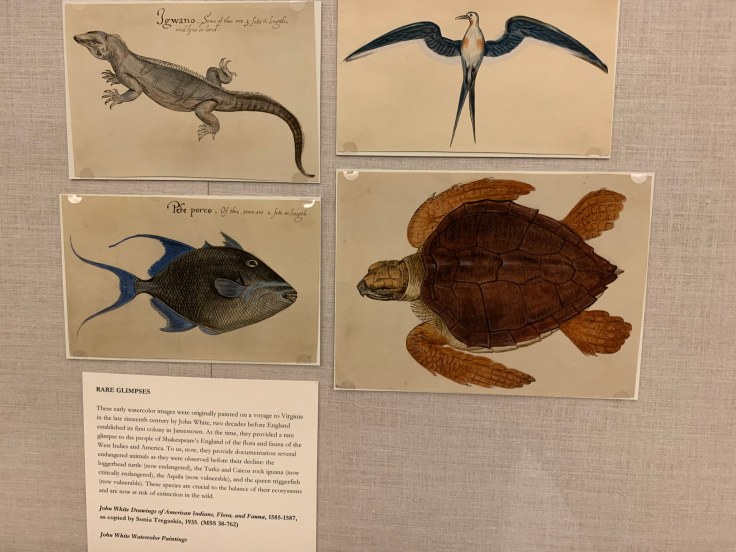Speaking the Weight of Living and Dying: A Symposium on Species Extinction and the Humanities
By Blair Wilner
“Yet the narrator’s silence risks becoming a collusion in the silence of a world happier to ignore what has been transacted; the dead must, after all, be named, or else the reality, the weight of their living and their terrible dying is set aside for the sake of our illusory comfort.”
Rowan Williams
The symposium Burning the Library of Life: Species Extinction and the Humanities focused on species extinction as both a scientific and cultural phenomenon, but particular attention was paid to the role of universities. In her opening remarks, Adrienne Ghaly pointed out that universities are tasked with holding human knowledges and Molly Schwartzburg connected this vocation with the archive’s purpose of “keep[ing] dead things safe, sound, and organized.” If universities and libraries are tasked with cataloging the dead, how should the academy relate to species extinction? Are we merely those who remember what was, or do scholars—particularly those in the humanities—have a role in resisting extinction, especially the mass extinction crises that are taking place even as I write this blog?
While the symposium consisted of talks about extinction in literature, politics, journalism, and archival work (as well as a piece of performance/sound art by Julianne Warren reflecting on birdsong and extinction), the rest of my comments on the symposium will focus on lectures by Ursula Heise of UCLA and Kim TallBear of the University of Alberta.

Professor Heise’s keynote, “The Silent Music of Extinction,” focused on silence as a central metaphor in literature thinking about species extinction. Texts like Rachel Carson’s Silent Spring and David Quammen’s The Song of the Dodo deploy silence as a sign of something amiss in the world around us. Silence marks an absence or indicates a loss. Since literary texts can only allude to the silence elicited by human-made environmental degradation, Heise shifted her attention to the work of composers and sound artists who deploy sound and sound’s absence to think about extinction. She discussed Sally Ann McIntyre’s Collected Silences for Lord Rothschild (2012), a collection of recordings that focus on the huia, a now-extinct bird species endemic to New Zealand. MacIntyre’s piece entailed recording the silence of taxidermied huia specimens in a museum and then broadcasting the audio in the Kapiti forest, the bird’s original habitat. MacIntyre describes this as “making material the still recent silence in the biospheric fabric, a hole in the air, a placeholder where these birds were projected to be” (quoted in Heise, Imagining Extinction, University of Chicago Press, 2016, 42).

The absence of bird song in the forest canopy is not the only type of silence Heise tasked us with thinking about. Heise ended her lecture by considering sound and silence in Zacharias Kunuk and Ian Mauro’s 2010 documentary Inuit Knowledge and Climate Change. Heise drew our attention to interviews with members of Inuit communities about the threats to polar bear survival in an Arctic region rapidly losing ice. In these interviews, Inuit men and women insisted that conservation biologists posed an equal (or possibly greater) threat to the polar bears, in no small part due to the noise caused by biologists’ helicopters and radio collars used to track the bears. Heise suggests these interviews cause us to consider both the interruption of silence that may be harming this vulnerable bear population as well the silencing of human voices in our discussion of species extinction, conservation, and climate change.

The connection between the silences of the environment and the silencing of certain human voices intersected with Professor TallBear’s lecture “Caretaking All Our Relations, Not American Dreaming.” TallBear described the challenge of talking about our present ecological crises as putting these unfolding calamities in their proper contexts. Conversations around issues like climate change or mass extinction are being discussed as problems of ecology, race, class, gender, and political economy, but often these discourses obscure the fact that the founding injustice spiraling out to all our present crises is settler colonialism. Even with a movement like Standing Rock, the voices of indigenous peoples are appropriated for white settler projects, especially the interests of the modern nation-state.
Drawing on Junot Diaz’s discussion of “radical hope,” TallBear insists that movements for justice need to be “misaligned with the dreams of the state.” Given that settler states and indigenous genocide are co-constitutive, what is necessary for the environmental humanities is to listen to the silences. Where are the voices of indigenous peoples being silenced by our commitments to the state, the market, or the academy? To give space to those voices silenced by the joint forces of settler colonialism and environmental destruction may not simply require shutting our mouths but rather requires us to learn to speak the weight of living and dying. Or, as Chickasaw novelist and poet Linda Hogan puts it: “We need new stories” (Dwellings, 94).

Leave a comment